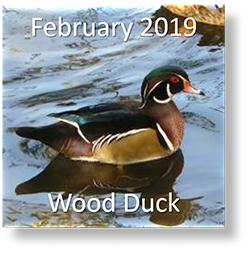 wood duck Aix sponsa
wood duck Aix sponsa
What is a Wood Duck?
A wood duck is a bird. Specifically, it is a duck, a type of waterfowl. Birds are warm-blooded animals with feathers, hard-shelled eggs and lightweight bones. Because they are warm-blooded, birds can maintain a constant internal body temperature and be active when their natural environment has extremes of very warm or very cold conditions. Feathers are used for flight, protection and attraction of a mate. They also aid in controlling body temperature and in helping birds identify other birds. Birds lay hard-shelled eggs. The hard shell, made mostly of calcium carbonate, keeps the egg from drying out and allows parents to sit on the eggs during incubation. Lightweight bones are necessary for flight. Bird bones are strong and have internal braces. Many bird bones are filled with air and are connected to the respiratory system. Other bones are fused together, increasing their strength. Ducks have short legs, webbed feet and a broad, flat beak.
What Does It Look Like?
The tail of a wood duck is long, dark and rectangular. Its short, broad wings have black feathers with white on the back edge of the wings. The neck is short. In winter and spring, the male becomes brilliantly colored. His head feathers are purple-green. There are two white lines from the base of the bill over the head to the back of the neck. The white throat feathers extend upward to the red eyes and base of the bill. His chest has maroon feathers with white markings, and the side feathers are gold with a black-and-white design. In summer, his feathers are brown with white patches on the face. The bill is red and white. The female has dark gray-brown feathers on the upper body with tan feathers on her sides. Her belly feathers, throat feathers and circle around the eye are white.
How Big is It?
Wood ducks are 17-20 inches long and have a wingspan of about 26-29 inches.
Where Does It Live?
This species lives in swamps and around rivers or ponds with wooded areas. It migrates through the state and is a summer resident. It will stay in southern Illinois during mild winters.
How Does It Reproduce?
Nesting occurs from March through July. Six to 14 eggs are laid per clutch. Sometimes several females lay eggs in the same nest. This process, called “dumping,” may result in as many as 40 young in one nest.
What Does It Eat?
This species eats acorns, insects, corn and the seeds of bald cypress trees, millet, buttonbush and hickory trees. It may also eat snails, salamanders and tadpoles.
Does Anything Eat It?
Humans, large birds of prey (hawks, owls), foxes, raccoons (Procyon lotor), American mink (Neovison vison) and snakes will eat wood duck adults, their eggs and/or their young. Large fishes and snapping turtles may also eat wood duck ducklings.
What Else Should I Know About It?The nest is made in a tree cavity, barn, chimney or humanmade nest box. Soon after hatching, the female coaxes the young to jump out of the nest to the ground. It may be a long distance from the nest to the ground.
Wood ducks sometimes perch on tree limbs.
When flying, the head of a wood duck bobs up and down.
Can I Hunt It?
The wood duck may be legally hunted in Illinois following all relevant laws and regulations. Specific hunting information about the wood duck is included in the Illinois Digest of Hunting and Trapping Regulations.

